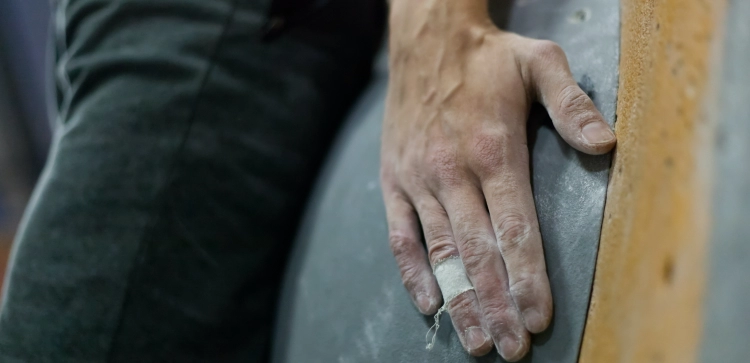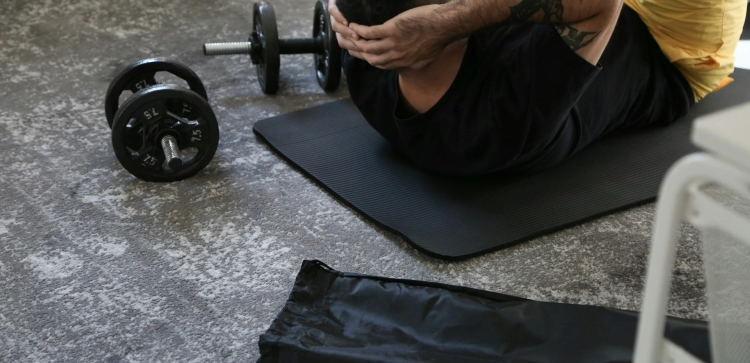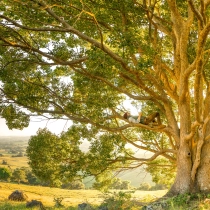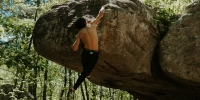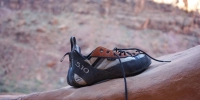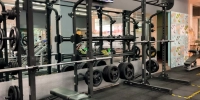Mastering Your Grip: Essential Techniques, Strength, And Endurance For Climbers

In the vertical world of climbing, your grip is arguably your most critical asset. It's the primary connection between you and the rock or plastic, influencing everything from your ability to hold onto the smallest edges to your endurance on long, pumpy routes. A strong, intelligent grip is not just about raw power; it's a nuanced blend of technique, specific strength, and sustained endurance. This comprehensive guide will delve into the essential techniques for optimizing your grip, explore targeted training methods to build formidable finger strength, and outline strategies to boost your grip endurance, ensuring you can tackle challenging holds and conquer longer climbs with confidence and efficiency.
- The Foundation Of Grip: Essential Climbing Techniques
- 1. Balanced Weight Distribution
- 2. Precision Finger Placement
- 3. Thumb Engagement (Pinching)
- 4. Strategic Resting
- Building Finger Strength For Challenging Holds
- Types Of Finger Grip Strength:
- Training Methods For Finger Strength:
- 1. Hangboard Training
- 2. Campus Board Exercises
- 3. Fingerboard Workouts (Broader Term)
- 4. Rice Bucket Training
- Progressive Overload And Consistency:
- Improving Grip Endurance For Longer Climbs
- The Importance Of Antagonist Training And Recovery
- Conclusion
- FAQ: Mastering Your Grip For Climbing
- What's The Difference Between Grip Strength And Grip Endurance In Climbing?
- How Do Climbers Improve Finger Strength?
- What Is "the Pump" In Climbing And How Can I Reduce It?
- Is Hangboard Training Good For Beginners?
- What Is Antagonist Training And Why Is It Important For Grip?
- How Does Rice Bucket Training Help With Grip?
- How Can I Improve My Grip Endurance For Longer Climbs?
- What Is "body Tension" And How Does It Relate To Grip?
- What Are "crimp," "open Hand," And "pinch" Grips?
The Foundation of Grip: Essential Climbing Techniques
Before diving into training, it's crucial to understand how to maximize the grip you already have. Efficient grip technique is about smart engagement and preserving energy.
1. Balanced Weight Distribution
One of the most fundamental principles to enhance your grip is to effectively distribute your body weight.
-
How to do it: Consciously shift and balance your weight between your hands and feet. The goal is to maximize the pressure you apply through your feet onto footholds, thereby reducing the strain on your fingers, hands, and forearms. Think of your legs as your primary engine, pushing you up, rather than your arms pulling you up.
-
Benefits: Reduces localized fatigue in your grip muscles, allowing you to stay on the wall longer and use less energy. It also makes your climbing more efficient and less dependent on brute upper body strength.
2. Precision Finger Placement
The exact way you place your fingers on a hold can dramatically affect your grip.
-
How to do it: Use the pads of your fingers (just below the tips) for most holds, especially edges. Avoid excessive pressure directly on your fingertips, which can lead to injury. Adapt your grip based on the hold's size and shape – for smaller holds, you might use a more crimped position; for larger holds, an open-handed grip.
-
Benefits: Maximizes the surface area contact with the hold, enhances friction, and minimizes strain on individual finger tendons, protecting them from injury.
3. Thumb Engagement (Pinching)
The thumb is an often-underutilized tool that can significantly reinforce your grip.
-
How to do it: For holds that allow it (like pinches, large slopers, or certain jugs), actively engage your thumb by pressing it against the side of the hold or against your other fingers. This creates a powerful counterforce.
-
Benefits: Adds a critical dimension to your grip strength, especially on holds that you can't wrap your fingers around. It increases stability and power, reducing the load on your other four fingers.
4. Strategic Resting
Resting effectively on the wall is an essential grip-saving technique.
-
How to do it: Look for opportunities to shake out your forearms on jugs, ledges, or comfortable holds. Find no-hand rests or use good foot placements to momentarily take weight off your hands. Actively shake out one arm while hanging with the other, then switch.
-
Benefits: Allows blood flow back into your forearms, clearing out metabolic waste (like lactic acid) that causes the "pump," and gives your grip muscles a crucial respite, extending your endurance on a climb.
Building Finger Strength for Challenging Holds
Finger strength is paramount for advanced climbing, allowing you to hold onto smaller, more difficult holds. It involves strengthening both the muscles of your hand and forearm, and crucially, the tendons in your fingers. Tendons adapt more slowly than muscles, so patience and consistency are key to preventing injury.
Types of Finger Grip Strength:
Before training, it's useful to understand the primary grip types you'll encounter and train for:
-
Crimp Grip: This is a powerful, often intense grip where your fingers are bent at the knuckles, and your thumb often locks over your index finger (full crimp) or rests on the side (half crimp).
-
Full Crimp: The most powerful but also most stressful. Your distal (last) finger joint is hyperextended, and the middle joint is acutely flexed, with the thumb wrapped over the index finger.
-
Half Crimp: Fingers are bent at 90 degrees at the middle joint, and the distal joint is slightly flexed, but the thumb is not wrapped over. This is a very strong and safer default for many crimps.
-
-
Open Hand Grip: This involves keeping your fingers relatively straight or slightly bent, spreading the load across all fingers. It's less stressful on pulleys and tendons.
-
Open Hand (Drag): Fingers are extended, and only the pads are touching the hold, like hanging from a bar.
-
Open Hand (Pocket): Using one, two, or three fingers in a pocket-like hold, keeping them extended.
-
-
Pinch Grip: Grasping a hold between your thumb and fingers, relying heavily on thumb strength.
Training Methods for Finger Strength:
For beginners, consistent climbing itself is the best finger strength builder. More advanced climbers can benefit from specific training tools.
1. Hangboard Training
A hangboard (or fingerboard) is a specialized training tool with various edges, pockets, and slopers designed to isolate and strengthen your fingers and forearms.
-
How to do it: Attach the hangboard securely above a doorway or to a sturdy frame.
-
Warm-Up (Crucial): Always perform a thorough warm-up for at least 15-20 minutes, including light cardio, dynamic arm/finger swings, and passive stretches, followed by some very light hangs.
-
Form: Hang with good posture, shoulders engaged (not shrugging), and a slight bend in your elbows. Avoid locking out your elbows or shoulders.
-
Progression: Start with holds that allow you to hang for 10-15 seconds. Gradually increase the difficulty by using smaller holds, adding weight (for advanced climbers), or increasing hang duration.
-
Types of Hangs:
-
Max Hangs: Hang from a challenging hold for 5-10 seconds, focusing on maximal finger recruitment. Rest for 2-3 minutes between hangs. Perform 3-5 sets.
-
Repeaters: Sorter hangs (e.g., 7 seconds on, 3 seconds off) repeated for multiple cycles (e.g., 6 reps). Rest for a longer period (2-3 minutes) between sets. This builds strength and endurance.
-
-
-
Benefits: Directly targets finger flexor strength in various grip positions (crimp, open hand, pocket). Highly effective for building specific finger power.
-
Safety Tip: Do NOT jump into hangboarding if you are a beginner (climbing for less than 6-12 months). Start gradually, listen to your body, and prioritize rest. Tendon injuries are slow to heal.
2. Campus Board Exercises
A campus board consists of horizontal rungs mounted on an overhanging wall. It's primarily used for dynamic, explosive movements without using feet.
-
How to do it:
-
Warm-Up: Essential, even more so than hangboarding due to the dynamic nature. Include full-body dynamic warm-up.
-
Form: Start by matching hands on a rung, then dynamically move one hand to a higher rung, followed by the other. Focus on controlled, explosive movements.
-
Progression: Start with large rungs and smaller "ladders" (moving up one rung at a time). Progress to smaller rungs, skipping rungs, or dynamic "bumps" between rungs.
-
-
Benefits: Develops explosive finger strength, dynamic power, coordination, and contact strength (the ability to quickly engage muscles upon touching a hold).
-
Safety Tip: Campus boarding is an advanced training method. It places high stress on fingers, elbows, and shoulders. Avoid if you have less than 1-2 years of consistent climbing experience or any current upper body pain.
3. Fingerboard Workouts (Broader Term)
This term often refers to training on a hangboard or other finger-specific devices. Exercises can include:
-
Dead Hangs: Hanging from a hold for an extended period (e.g., 20-30 seconds). Great for basic strength and endurance.
-
Pull-ups/Chin-ups on Holds: Performing pull-ups using specific holds on a hangboard or campus board. This combines back and arm strength with finger strength.
-
Offset Hangs: Hanging with one hand on a harder hold and the other on an easier hold, or one hand gripping harder than the other to challenge individual fingers.
-
Bodyweight Rows on Holds: Lowering yourself from a hangboard or similar bar while engaging finger grip.
4. Rice Bucket Training
A simple, low-impact method for strengthening hands, wrists, and forearms, particularly targeting smaller stabilizing muscles.
-
How to do it: Fill a 5-gallon bucket with uncooked rice.
-
Exercises: Submerge your hands into the rice and perform various motions:
-
Fingers Flexion/Extension: Open and close your hands against the resistance of the rice.
-
Fist Clenches: Squeeze the rice firmly.
-
Wrist Rotations: Rotate your wrists in the rice.
-
Stirring: Make circular motions with your hands.
-
Pinching: Try to pick up handfuls of rice using a pinch grip.
-
-
Duration: Perform each exercise for 30-60 seconds, repeating several times.
-
-
Benefits: Targets the smaller intrinsic muscles of the hand and forearms, improves tendon and ligament health, enhances endurance, and is relatively gentle, making it good for active recovery or warm-ups.
Progressive Overload and Consistency:
-
Progressive Overload: To continually gain strength, you must gradually increase the challenge over time. This could mean using smaller holds, adding weight (e.g., with a weight vest), increasing duration, or reducing rest times.
-
Consistency: Regular training is key. Dedicate specific sessions each week to targeted grip and finger exercises. Avoid sporadic, intense bursts, which can lead to injury.
Improving Grip Endurance for Longer Climbs
Grip endurance is your ability to maintain a strong grip for extended periods, crucial for avoiding the dreaded "pump" on longer routes. While grip strength allows you to hold small edges, endurance allows you to keep holding them, move between them, and finish a climb.
Understanding the Pump:
"The pump" is a sensation of extreme fatigue, tightness, and sometimes pain in the forearms, making it nearly impossible to grip holds effectively. It's caused by a buildup of metabolic byproducts (like lactic acid) when muscles are working hard without sufficient blood flow to clear waste and supply oxygen. Improving grip endurance trains your body to be more efficient at both utilizing oxygen and clearing waste.
Training Methods for Grip Endurance:
1. Repeaters (on Hangboard or Bar)
Repeaters are a highly effective method for building localized muscular endurance in your forearms and fingers.
-
How to do it:
-
Hangboard Repeaters: Hang from a moderately challenging hold (one you can hold for about 10-15 seconds) for a short duration (e.g., 7 seconds on), followed by a short rest (e.g., 3 seconds off). Repeat this "on/off" cycle several times (e.g., 6 reps) to complete one set. Rest for a longer period (e.g., 2-3 minutes) between sets. Perform 3-5 sets.
-
Variations: You can vary the grip type (half crimp, open hand), hold size, and the on/off/rest timings.
-
-
Benefits: Trains your forearms to resist fatigue, improves blood flow to the muscles, and enhances the efficiency of waste removal, delaying the onset of pump.
2. ARC Training (Aerobic Restoration and Capillarization)
ARC training is low-intensity, long-duration climbing that focuses on improving the aerobic capacity of your forearm muscles.
-
How to do it: Climb continuously on very easy terrain (well below your limit, where you feel no pump) for extended periods (e.g., 20-40 minutes). The intensity should be low enough that you could hold a conversation. Focus on smooth, continuous movement, minimal rest, and proper breathing. You should feel a very light, tolerable pump.
-
Benefits: Builds capillaries (tiny blood vessels) in your forearms, which improves oxygen delivery and waste removal, significantly enhancing endurance. It also refines movement efficiency.
-
Where to do it: Best done on a traversing wall, a circuit board, or easy routes in a gym or on suitable outdoor terrain.
3. High-Volume Climbing
Simply climbing more, especially on varied terrain and grades, will naturally improve your grip endurance.
-
How to do it: Increase the number of routes or boulder problems you attempt within a session, focusing on efficient movement and minimizing rest between climbs.
-
Benefits: Mimics the demands of longer climbs, forcing your forearms to adapt to sustained work.
4. Avoiding Over-Gripping
A common mistake that wastes energy and causes premature pump.
-
How to do it: Only grip holds as hard as necessary. Learn to relax your grip on good holds or during rests, and engage your core and legs to take pressure off your hands.
-
Benefits: Conserves energy, delays pump, and improves overall climbing efficiency.
The Importance of Antagonist Training and Recovery
While strengthening your grip is vital, a balanced approach is crucial for preventing injuries and ensuring long-term climbing health.
Antagonist Training: Balancing Your Strength
Climbing heavily uses your flexor muscles (for pulling and gripping). Neglecting your antagonist muscles (the extensors, responsible for pushing and opening your hand) can lead to muscular imbalances, pain, and injury.
-
How to do it: Incorporate exercises that work the opposing muscle groups.
-
Finger Extensors: Use rubber bands around your fingers and spread them open, or try rice bucket exercises focusing on hand opening.
-
Elbow/Shoulder Extensors: Push-ups, dips, overhead presses, and triceps extensions balance out the pulling muscles.
-
-
Benefits: Reduces the risk of common climbing injuries like Golfer's Elbow, promotes overall joint health, and creates a more balanced, resilient body.
Rest and Recovery: The Unsung Heroes of Strength
Strength and endurance gains happen during recovery, not just during training.
-
Adequate Rest Days: Allow sufficient rest (typically 24-48 hours) between intense climbing or grip training sessions for your muscles and tendons to repair and adapt.
-
Sleep: Prioritize 7-9 hours of quality sleep per night.
-
Nutrition and Hydration: Fuel your body with a balanced diet and stay well-hydrated to support muscle repair and energy levels.
-
Active Recovery: Gentle activities like walking, light yoga, or rice bucket training can promote blood flow and aid recovery without overstressing muscles.
Conclusion
A powerful and enduring grip is a cornerstone of effective climbing, enabling you to tackle more challenging holds and ascend longer routes. By meticulously applying essential techniques like balanced weight distribution and precision finger placement, and by diligently engaging in targeted training for finger strength (through hangboards, campus boards, and fingerboard workouts) and grip endurance (via repeaters and ARC training), you can significantly enhance your performance. Remember to complement this work with crucial antagonist training and prioritize robust recovery practices. Mastering your grip is a continuous journey that will not only unlock new levels of physical prowess but also deepen your appreciation for the nuanced art of climbing.
FAQ: Mastering Your Grip for Climbing
What's the difference between grip strength and grip endurance in climbing?
Grip strength refers to the maximum force your fingers and forearms can apply to a hold (e.g., holding a tiny crimp). Grip endurance is your ability to maintain a sufficient grip force over an extended period (e.g., staying on a long, pumpy route without getting too "pumped").
How do climbers improve finger strength?
Climbers improve finger strength through consistent climbing, and for more advanced climbers, specialized training like hangboard max hangs, campus board exercises, and fingerboard workouts targeting various grip types (crimp, open hand, pinch).
What is "the pump" in climbing and how can I reduce it?
"The pump" is the sensation of extreme forearm fatigue and tightness caused by lactic acid buildup during intense gripping. To reduce it, improve grip endurance through training methods like repeaters and ARC training, practice efficient climbing techniques (using legs more), and strategic resting on the wall.
Is hangboard training good for beginners?
Generally, no. Hangboard training places significant stress on finger tendons and is best for intermediate to advanced climbers (those with 6-12+ months of consistent climbing). Beginners should focus on building foundational strength and technique through regular climbing.
What is antagonist training and why is it important for grip?
Antagonist training involves strengthening muscles that oppose your primary climbing muscles (flexors). For grip, this means training your finger extensors (muscles that open your hand) and arm extensors (triceps, chest). It's crucial for preventing muscle imbalances, reducing injury risk (like Golfer's Elbow), and promoting overall joint health.
How does rice bucket training help with grip?
Rice bucket training helps improve finger and forearm endurance by targeting the smaller, intrinsic muscles of the hand and forearms. Performing various gripping, flexing, and extending motions in the resistance of rice builds resilience and can aid in active recovery.
How can I improve my grip endurance for longer climbs?
Improve grip endurance by consistently performing repeaters on a hangboard or pull-up bar, engaging in ARC (Aerobic Restoration and Capillarization) training (long, low-intensity climbing), increasing your climbing volume, and actively avoiding over-gripping holds on routes.
What is "body tension" and how does it relate to grip?
Body tension is the ability to keep your entire body tight and engaged, linking your hands and feet through your core. It allows for efficient power transfer, prevents unwanted swinging, and reduces direct strain on your grip, making your climbing more controlled and energy-efficient. A strong core is fundamental to body tension.
What are "crimp," "open hand," and "pinch" grips?
These are primary finger grip types:
-
Crimp Grip: Fingers bent at knuckles, thumb often over index (full crimp) or on side (half crimp). Powerful but high stress.
-
Open Hand Grip: Fingers relatively straight or slightly bent, spreading load across all fingers. Less stressful.
-
Pinch Grip: Grasping a hold between your thumb and fingers. Requires strong thumb engagement.


